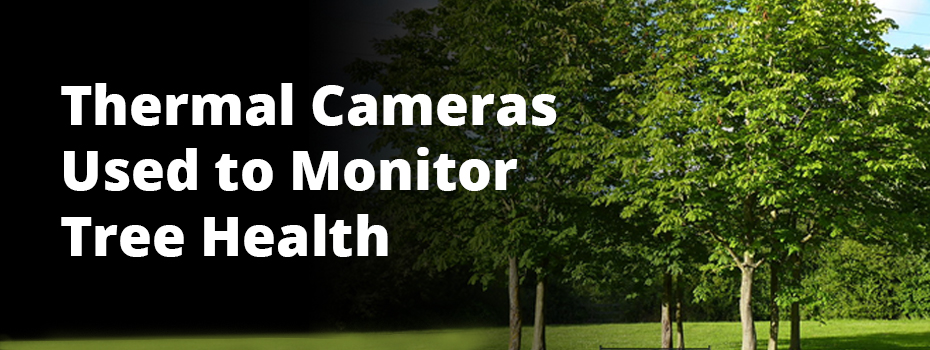
Thermal cameras are suitable for a multitude of ecological applications such as studying bats, monitoring animals in woodland, identifying the presence of algal bloom, detecting effluents in water bodies, and assessing sanitary landfills. Recently, we were made aware of another ecological use when we supplied a thermal camera to a much-valued customer involved with tree thermography.[1]
Quick Links
- What is Tree Thermography?
- How are Thermal Cameras Used to Monitor Tree Health?
- Advantages of Tree Thermography
- Further Information
What is Tree Thermography?
Tree thermography is the practice of using thermal imaging cameras to assess the health of trees; specifically, using thermal cameras to identify decay, cavities, and/or fungal/pathogen infections.
How are Thermal Cameras Used to Monitor Tree Health?
Thermal cameras detect the surface temperature of trees and provide a thermal image that maps the tree’s surface heat distribution using a thermal palette. As the thermal conductivity of wood relies on tissue humidity, cavities, where there is no tissue, or areas that have decayed, and therefore are not absorbing as much water, will appear colder than healthy areas because their thermal conductivity is reduced. Thermal cameras cannot look inside trees; however, they can give an insight into the condition of the underlying tissue. Healthy areas will be more thermally conductive than unhealthy areas and, therefore, more heat will reach the surface of the tree. As a result, a completely healthy tree will appear as one warm colour on the thermal image; whereas, the colour of a tree with cavities or decayed tissue will vary, with the damaged areas illustrated by a colder colour. Identifying areas with internal decay can help with the detection of fungus or pathogens, enabling early diagnosis before characteristic wounds or damage becomes visible.
Advantages of Tree Thermography
Thermographic inspection is a non-invasive method of monitoring the health of trees; unlike probes and other traditional tree monitoring equipment, thermal cameras do not compromise the tree’s defences as you do not need to make contact with the tree, let alone penetrate its bark, in order to ascertain its condition. In addition to this, thermographic inspection does not disturb the wildlife living in the tree’s branches or cavities and eliminates the risk of disease transference between specimens.
Offering fast, real-time assessment of the entire tree from the ground, checks can be conducted in a matter of minutes allowing you to inspect up to one-hundred trees a day in parks and woodlands. As the whole tree is checked, cavities/decay in the roots can be detected and a holistic assessment of the tree's health may be made, thereby preventing unnecessary felling which presents environmental, landscape, and economic advantages. Finally, thermal images can be documented and used for comparison with future inspections, allowing you to track tree health over time.
Further Information
Please browse our eclectic selection of ecological thermal cameras, including models by Conotech, FLIR, Guide, Hikmicro, and Pulsar. For more help and advice regarding these cameras and their applications, don’t hesitate to get in touch with our Sales team on 01642 931 329 or via our online form.
Footnotes
[1]Information for this blog was gathered using the following sources:
- Catena & Thermography, About Thermography, last accessed 07 July 2022
- Catena & Thermography, About Tree Thermography, last accessed 07 July 2022


